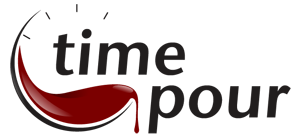The Long History of the Wonderful Il Palagio Estate

Il Palagio Estate is a gorgeous villa that sits just outside Panzano in Chianti, a town located directly between Florence and Siena in the Conca D’Oro (Golden Valley) of Tuscany.
The villa was originally built in the AD800's as a monastery and was subsequently used as a castle in the 1200s war between supporters of the Pope (Florence) and the Holy Roman Empire (Siena).
In 1776, Alberto Firidolfi bought the estate for his hunting lodge, named it Il Palagio and planted vines.
In 1920, Dino Bindi was born in the Il Palagio villa and, for many years, his family worked the estate under the mezzadria (sharecropping) system. When mezzadria was abolished in 1953, the Bindi family left Il Palagio and moved into Panzano town. But this was not the last that Il Palagio would see of la famiglia Bindi.
Dino Bindi's great friend, Dario Piccini, a Panzano born builder, returned to his hometown from Florence and bought the villa in 1965. While today the villa is considered by historians as one of the finest in Tuscany, in 1965 it was in bad repair.
Dario and his son Fabrizio were in the building restoration business, and were in demand to restore palaces in Siena and Florence. They had great knowledge of how to restore ancient villas and in 1992, Fabrizio set about returning Il Palagio to its former glory, creating a special place for visitors to their estate. In 1996, the first renovation was completed.
Il Palagio's first Chianti Classico was produced in 1968. But for many years after, only bulk wine was made. It wasn't until 2004 that a long awaited winery was added, and premium wine began to be made again by Fabrizio Piccini and his daughter Monia. After her father's untimely death Monia was joined in the winery by her husband Franco Guardacci - Dino Bindi's grandson. The circle of Il Palagio was complete. Monia and Franco are now owners of the estate and winery.
Franco left his furniture restoration business to join his wife in the Il Palagio winery. They had immediate success when, both barely in their thirties, their 2007 Chianti Classico was awarded the prestigious tre bicchieri (3 glasses) in the Gambero Rosso Wine Guide.
Monia Piccini and Franco Guarducci are people from the top shelf. Monia, enterprising and energetic, master of three languages, and Franco, considered, gentle and quietly determined.
After the Vinitaly convention this year I travelled to Florence and caught the bus from the hidden bus station (I am sure that they don’t want you to find it) and enjoyed the F1 driving performance the bus driver gave us on the windy, one hour trip to Panzano.
I met Monia and Franco for dinner at one of their favourite restaurants in a small hamlet nearby, and I sat by with a ringside seat as they argued about what would be the correct wine to order. We had no wine with entrée, and it wasn't until main had arrived that a bottle was finally settled upon that satisfied both.
They are passionate about everything wine. If you observe them during a tasting of their own wines they are always sniffing: the cork as it comes out of the bottle, the wine before they serve, the empty glass that they have just drunk from. Franco will even cut the cork in half and smell both halves to see if the inner cork meets his standards. Their curiosity knows no bounds.
Franco took me to their San Martino vineyard which is a few kilometres from the villa, on steep slopes facing the southwest. This vineyard was certified organic in 2013 (no pesticides), is completely dry grown (no irrigation) and is hand harvested. This basically means that the vineyard is grown at the mercy of Mother Nature. Franco only has natural defences against pests, he cannot control crop yield as it will be totally dictated by rainfall, and every grape on this perilously steep vineyard must be picked by hand. This is agriculture at its most pure.
Of course, not using pesticides allows Franco to indulge in a wholly Italian passion: using machines that do unusual things. Italians build machines that do anything...they simply love quirky machinery.
Out of a hidden cave in the hillside Franco showed me his pride and joy: a machine that holds the vine stem to one side, and then cuts the grass and weeds around the vine (no Zero weed killer allowed!). This wondrous machine then mulches all of the plant matter so that it can be spread as fertiliser back on the vineyard from whence it came.
We left the San Martino vineyard and headed back to the winery.
We walked through the small perfectly sited Le Bambole vineyard that produces their most prestigious wine and sat down on a stone fence and survey the wonder of Bella Toscana that unfolded in all its glory below us.
As we sipped on the new 100% Merlot that Franco had produced for the first time, I asked “do you ever tire of this view?”
Franco responded, “Every day I look out and think how lucky I am to be here.”
I first visited Il Palagio with my family in 2008 and was captivated by its beauty. '
Even as I write this piece I am transported back to the sun-drenched valley with the textbook Tuscan landscapes of steep slopes, pencil pines and verdant vineyards.
It is a special place and when Monia Piccini asked me to import her wine to Australia it started a wonderful romance with the wines of Italy, the wonderful people that make them and the glorious places where they are produced.
Just like Franco, I feel very lucky.

Comments
0 Comments